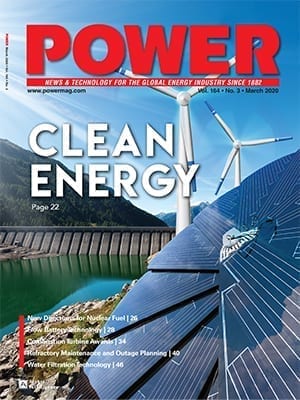
The One Big Beautiful Bill Act introduced sweeping changes to the Internal Revenue Code, but some of the most impactful changes for the renewable energy and fuels industries are the foreign entity of concern rules (FEOC) rules.
These rules present real challenges for project owners, but they are not relevant for facilities that begin construction before 2026. Nonetheless, manufacturers in the U.S. and around the world are under increasing pressure to comply by January 1. So how are supply chains adapting?
COMMENTARY
First, it helps to know what the FEOC rules are. At a high level, they require three more things to qualify for a tax credit:
- Owners of tax credit-qualified projects—particularly renewable electricity projects under Code Sections 48E and 45Y—cannot be either a “specified foreign entity” (SFE) or a “foreign influenced entity” (FIE). (More on SFEs and FIEs below.)
- Manufacturers that make a product that qualifies for the Code Section 45X manufacturing credit (for example, torque tubes, battery modules, inverters, or nacelles) cannot be either an SFE or an FIE.
- Neither owners nor manufacturers can include “too many” items in their tax-credit qualified project or product that are manufactured by an SFE or FIE (regardless of where the manufacturing occurs). This is referred to as the material assistance rule and is the focus of this article.
At a high level, an SFE is any person who is a citizen or national of the People’s Republic of China, Russia, North Korea, or Iran or any entity that has certain kinds of ties to the government of one of those countries. It also includes any entity more than half of which is owned by one of those kinds of people.
An FIE is any entity that is owned 25% by any one SFE or 40% by multiple SFEs or if any SFE has the direct authority to appoint an officer or director of the entity. It also includes entities that are “effectively controlled” by an SFE through a contract or licensing arrangement and any entity if more than 15% of its debt is held by one or more SFEs.
That’s a lot of equations to solve, but the end result is big changes for the U.S. renewable energy supply chain. We do not have guidance from the U.S. Department of Treasury or the Internal Revenue Service (IRS) yet, so manufacturers should be careful when interpreting the statute. If a company is not completely de-FEOC’d, their customer—and, in some cases, their customer’s customer—may not qualify for the tax credit. At all. That can very quickly create significant losses that will be pushed down to the manufacturer through supply contracts.
That said, we know enough today to be sure of some aspects of the FEOC rules. For example, we know it is fatal if a single SFE owns 25% or more of a manufacturer. We also understand how to characterize most ownership structures and know that contracts with SFEs (including loans) can cause significant problems.
For those areas where we need guidance, there is a lot of value in a conservative approach. For example, there is some uncertainty as to exactly how far into the supply chain we have to go. Today, it’s worthwhile to gather as much cost information as possible. We do not know exactly what “manufacturing” means in this context. While we have reason to believe that it has the same meaning as in the domestic content context, it’s smart to vet every process to find true transformation. And, despite the list of examples in the law, we also do not know exactly what “effective control” means.
We also know that Congress and the Administration are very concerned about taxpayers abusing these rules. Thankfully, there is a long list of taxpayer games that courts and the IRS have already treated as abusive. Based on that history and some healthy regard for the gray areas in the statute, we are currently advising clients to avoid naming SFEs as officers or directors or entering into conduit financing arrangements, i.e., back-to-back loans. We are also encouraging clients to treat members of the same family as the same person unless the facts clearly indicate that the family members are acting independently. We are also very sure to confirm that there is economic change when a company goes from SFE or FIE status to not.
All of these factors have to be considered in real time. Many manufacturers are mandating compliance by January 1 because their customers are requiring assurances about orders that they expect to make in 2026. Why so early? Because lenders need assurances about compliance with the FEOC rules before they will even consider loaning money on a project that is subject to these rules.
Finally, don’t forget that almost everyone in the renewable energy industry will eventually have to prove compliance with the FEOC rules to someone. Think carefully about the promises you get or make in supply contracts, as well as the damages if you break that promise. Serial numbers and other unique identifiers are important, particularly during this period when we are transitioning into the FEOC rules. And, please, help your future self (and your lawyers) by keeping excellent records at every step of your FEOC compliance journey.
—Elizabeth Crouse is a tax partner in Holland & Knight’s Portland, Ore. office. She advises clients, including top-tier strategic and corporate investors, developers and operators in the renewable energy and fuels, hydrogen and carbon capture industries, on a range of U.S. federal income tax matters.









